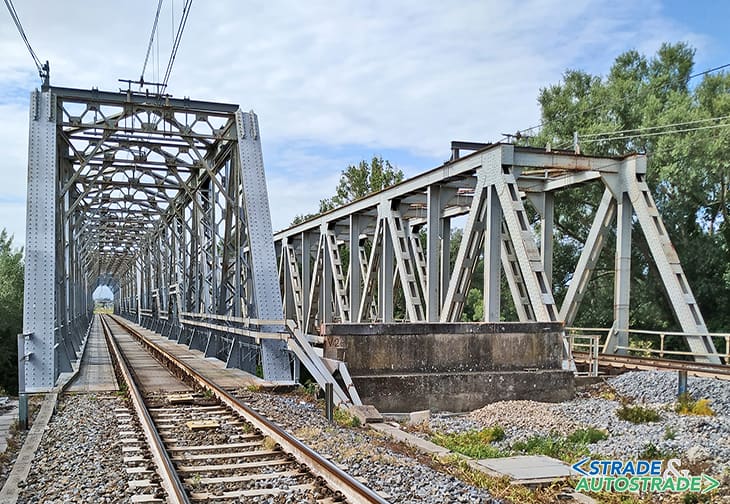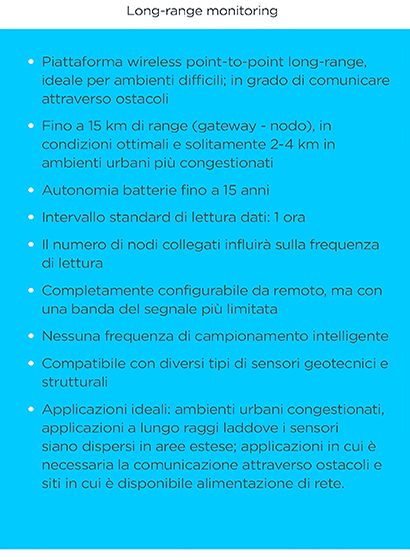![]() Wireless structural monitoring – Per la versione in Italiano: https://www.stradeeautostrade.it/ponti-e-viadotti/monitoraggio-strutturale-di-ponti-e-viadotti-con-la-tecnologia-wireless/
Wireless structural monitoring – Per la versione in Italiano: https://www.stradeeautostrade.it/ponti-e-viadotti/monitoraggio-strutturale-di-ponti-e-viadotti-con-la-tecnologia-wireless/
For background picture: (photo credit: Tecnoplus Sas)
One of the technologies that has seen significant growth in recent years is wireless condition monitoring. This “Internet of Things” (IoT) technology comprises a range of sensor nodes connected by a wireless communications platform which relays data to users via the cellular network.
Types and applications
The wireless communications technology used by market leader Senceive enables users to integrate a range of sensors types to gain information about structural or geotechnical behaviour.
Sensors include triaxial tiltmeters, laser distance meters, vibrating wire sensors (strain gauge, piezometers, etc.), mV/V electrical sensors, potentiometric or draw wire sensors. All these instruments are quick and simple to install, sufficiently robust for construction applications and can be left in place for many years with minimal maintenance.
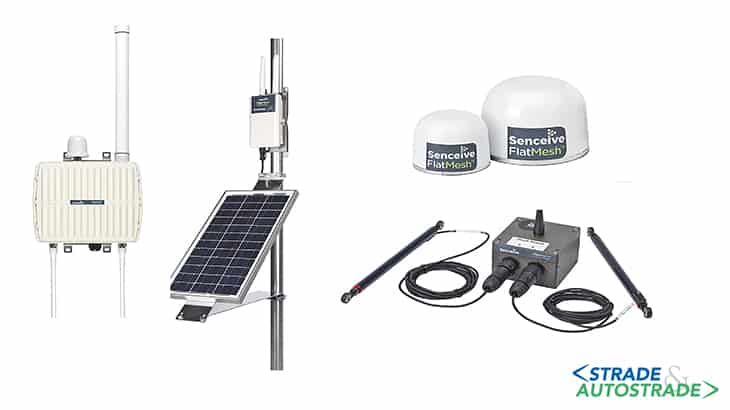
They can be used to monitor joints and cracks, slope movement, changes in the water table or soil pressure, longitudinal settlement, temperature, deformation and engineering parameters such as strain or pore water pressure. Used alongside regular survey and inspection methods, they can help to extend the safe operational life of structures.
Remote monitoring with wireless technology
The advantages of a Senceive wireless system are: an increased reliability of information, ultra-low energy consumption, monitoring of structures affected by a difficult way to access, reduce cost for cables-wiring-machinery, safe data transmission of data through an adequate level of data protection.
Senceive has two distinct communications platforms designed to operate in the widest range of applications.
FlatMesh™ is the most suitable choice for concentrated sensor configurations, high frequency reporting and intelligent and responsive operation, and GeoWAN™ is ideal where sensors are widely dispersed.
Flatmesh™ – Intelligent Monitoring
The FlatMesh™ platform is based on a mesh network of intelligent sensors in which the devices ‘talk’ to their neighbours, relaying data in a series of hops to the outside world. This dynamic, non-hierarchical system is extremely robust and can tolerate damage to individual devices without systematic loss of performance.
It is suited to dense networks concentrated in relatively small areas (up to 300 m between nodes). It is par-ticularly appropriate for sites that are difficult to access, with obstructions that would constrain other technologies. Nodes communicate to find the optimal route, transmitting data to the gateway in a series of “hops” with a reporting rate up to 1 second.
Continuous improvements of the wireless interface and algorithms has resulted in ultra-low power consumption and a very long battery life. The intelligent management system allows users to interact remotely with nodes and gateways, enabling them to adjust the frequency of readings and adjust levels at which automated alarms are triggered.
The FlatMesh™ communications gateway can be powered by a 20W solar panel and has internal backup battery, providing up to 15 days continuity in the absence of power.
Geowan™ – long-range monitoring
Where a geotechnical or structural monitoring solution is required to cover a wide area, such as across a mine or a city, Senceive’s GeoWAN™ communications platform is often the better choice.
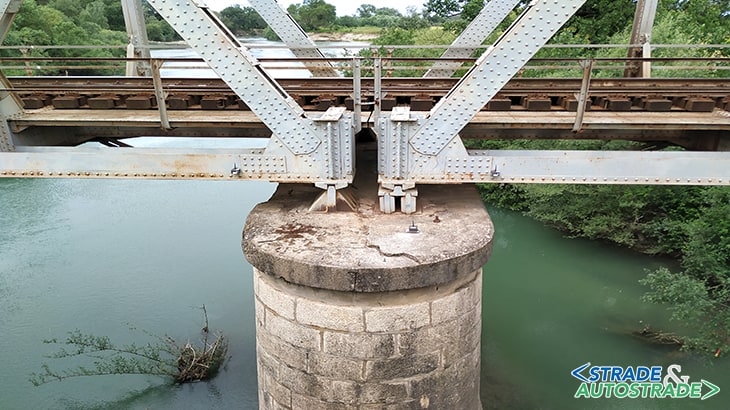
GeoWAN™ uses a lower frequency radio band than FlatMesh™. It is based on the industry-standard LoRaWAN protocol and is capable of long-range transmission with sensors able to communicate with a gateway at a distance as great as 15 km.
The gateway used to relay data from the site to remote users can be adapted to the available network infrastructure. The easiest option is usually the built-in cellular modem (2G/3G/4G); alternatively an Ethernet interface can be used for WiFi, ADSL, or LAN connections.
Monitoring bridges and viaducts
Used on bridges and viaducts, wireless condition monitoring can deliver data in near real-time to provide engineers with early warning of distress or defects and to identify long-term trends in structural behaviour that can be used to target further investigation or maintenance.
As with any monitoring programme, it is important to build a set of baseline data to understand the periodic cycle of behaviour associated with changes in weather, temperature, loading etc..
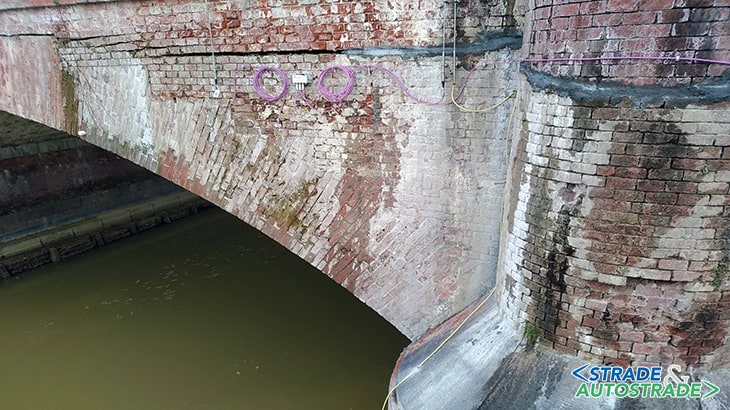
Having done so, it is possible to identify sudden events that should raise immediate concern, or longer term trends that can target maintenance or repair. Senceive offers a range of wireless nodes which can be implemented in a monitoring system.
Tilt sensors such as the NanoPlus and Triaxial Tilt Nodes can be deployed on bridge piers and spans to monitor rotations and displacements. They are also widely used on slopes to give early warning of landslides. For applications prone to severe vibrations, such as railway structures, a highly robust High-g version is available.
This is installed on the track sleepers of many rail bridges to monitor changes in rail twist, and longitudinal and transverse level. Tilt sensors guarantee a resolution of 0.0001° and a repeatability of ±0.0005°(± 0.009 mm/m).
Tilt sensors can be coupled with displacement sensors to measure the opening/closing and relative movement of construction joints of bridge spans (in X-Y-Z directions). To monitor stress, for example in bearing structures, wireless strain gauges can be embedded in concrete or fixed to a surface and linked to the remote monitoring system using a mV/V Node or Vibrating Wire Node.

The Optical Displacement Sensor (ODS) node combines a triaxial inclinometer and a laser extensometer. It can be used to monitor deformation of arches, or the movement and inclination of embankments and piers, and provides a wireless alternative to optical methods. Range is typically 150 m, with a repeatability of ±0.15 mm.
A wider range of third-party sensors can be integrated with the wireless system using vibrating wire sensor interface nodes. Examples include cracks gauges, wire extenders, and embedded joint meters.
All these sensors can managed by one or additional Gateways and “WebMonitor” web-based data access system. All sensors can be then configured remotely, being able to change reporting rate, applying new derived calculations (displacements, pressure and tensional values, twist & cant, etc.) and setting alarms on each read information.
![]() Per la versione in Italiano: https://www.stradeeautostrade.it/ponti-e-viadotti/monitoraggio-strutturale-di-ponti-e-viadotti-con-la-tecnologia-wireless/
Per la versione in Italiano: https://www.stradeeautostrade.it/ponti-e-viadotti/monitoraggio-strutturale-di-ponti-e-viadotti-con-la-tecnologia-wireless/

